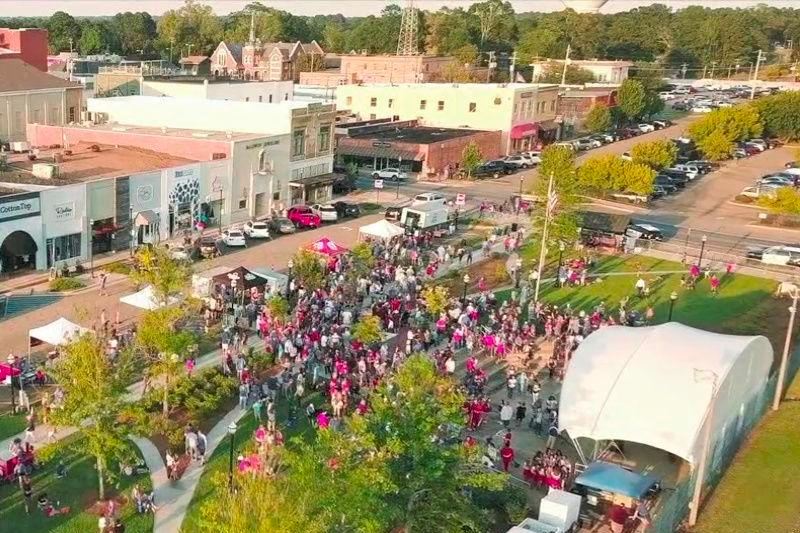Read the report and learn more about the eight other communities we profiled here.
QUALITY OF LIFE IS KEY IN RUSTON, LA
Location: Ruston, LA
Population: 21,987 (2020)
Typologies: Retirement, second-home; Traditional main street; College
Key takeaway: Ruston is implementing changes to their built environment to encourage walking and to connect their communities. These changes have enabled them, in spite of their distance from a large metropolitan area, to remain a vibrant small city that can attract new residents, including students graduating from the local college, while improving the quality of life of their current residents.

Ruston, LA, is in some ways an island. With no major metropolitan area nearby (the nearest city, West Monroe, is about 30 miles away) and commuter traffic through the area decreasing over the last decade, Ruston has developed an internal resilience, focused on the quality of life of their residents, including supporting Complete Streets, walkability, local restaurants, and downtown programming.
Ruston’s Monroe Street Corridor is a multi-use greenway that will run from the north city limit to the south city limit, and connect to Louisiana Tech University. The trail will provide a walkable and bikeable connection between the southern part of town, which has historically been a lower-income area with higher percentages of Black, Indigenous, and People of Color (BIPOC) and the northern, wealthier, and predominantly white part of town—two groups that have been divided by interstate highways in the past.
Ruston’s other recent efforts to enhance quality of life include pedestrian-friendly site design. The city’s 2016 Reimagine Ruston plan included a major walkability component, including a requirement for all new buildings and businesses throughout the city to put in sidewalks. They’ve also explored zoning changes to reduce the amount of land used for parking and implemented using a parking calculator to look at private lots with different uses between daytime and night, which resulted in a 20% reduction and increased parking efficiency.
“Downtown has been reborn as a cultural, entertainment, professional, and retail hub, much like its glory days when the town center was the heartbeat of the city.” – Mayor Ronny Walker, Ruston, LA